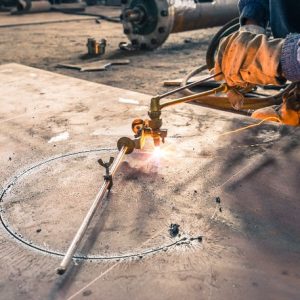
How to Properly Use and Maintain a Pallet Jack
A pallet jack is a useful tool for transporting loads around your warehouse or storage facility. With proper use and maintenance, this equipment can help you move materials quickly, easily, and safely.
A manual pallet jack is the most common type. It has two long forks that fit inside pallets to lift and maneuver the load. Its control lever has a pumping action that raises and lowers the forks.
Lifting
If your work requires you to move heavy loads over long distances, a pallet jack is a great tool to have. These simple machines allow one person to lift and transport pallets of materials that would otherwise be too heavy for the operator to move by hand. There are two basic types of pallet jacks: manual and electric. Both are designed to be operated by one person, but they function differently and have different maximum capacities. Before using a pallet jack, it is important to review any operating instructions or safety documents. It’s also a good idea to undergo training from an experienced employee to learn how to maneuver and operate the equipment properly.
To operate a manual pallet jack, stand behind it and firmly grasp the handle with both hands. Press down on the pump lever near the handle to raise the forks off the pallet jack ground. You can then maneuver the jack to your desired location and slide its forks underneath or through openings in the pallet. Once you are ready to move the load, lower the forks back to the ground and steer the jack to its destination. When moving, always use smooth motions and avoid sudden jolts, which could cause the load to tip over or fall off.
When you’re ready to move the pallet jack, first put its control lever into the neutral position. You can then push or pull the machine to maneuver it. It’s typically easier and safer to push the jack instead of pulling it, but you may have to pull it occasionally to get around corners or other obstacles. Be sure to check the maximum capacity of your jack and never overload it. Loading a pallet jack with too much weight can damage the equipment or cause injuries to the operator or those nearby.
Transporting
While pallet jacks are relatively simple machinery, they can be dangerous to operate if improperly used. Like any equipment, they must be properly maintained and inspected to ensure safety. For example, a pallet jack that has not been properly pumped up may not have enough power to move a load. It is also important to make sure that the forks are lowered to avoid hitting obstacles or creating a tripping hazard. It is also recommended that workers wear safety gloves and use a back belt when working with hand trucks, carts, or pallet jacks.
Pallet jacks come in a variety of designs, including manual and electric options. The most common is a two-wheeled pallet jack that uses hydraulics to lift and lower the forks. These are usually easier to maneuver than four-wheel pallet jacks, which can be more difficult to turn and more likely to tip over if the load is not evenly distributed.
Before using a pallet jack, workers should familiarize themselves with the controls and how to operate it correctly. They should also practice maneuvering with a empty pallet to get a feel for the controls. This is especially important if the warehouse has tight aisles or narrow spaces, as a poorly-managed pallet jack could become stuck or damage goods.
If using an electric pallet jack, workers should check the battery before starting work and keep track of the battery’s maintenance schedule. These machines can be extremely powerful, so they should only be operated by trained personnel. Workers should also never exceed the maximum load capacity of the pallet jack, which can damage the equipment or cause injuries to workers.
When choosing a pallet jack, it is best to go with a model that has polyurethane wheels, which will not stain or damage the warehouse floor when being wheeled from one location to another. It is also important to look for a jack that has a low profile, which will be easier to maneuver in tight spaces. Some companies offer collapsible pallet jacks that are even more compact than standard double-fork models, and some have forks that can fold up against the handle section when not in use.
Loading
Before you even think of operating a pallet jack, you need to make sure it is safe. A simple inspection can prevent injury and equipment damage down the road. Check for a clear route to the pallet and your drop-off point, look for stray construction materials and electric cords, and ensure the jack isn’t overloaded.
To operate a manual pallet jack, stand behind it and place both hands on the metal steering handle. Push the handle toward the prongs to raise the forks off the ground and to move forward. Then, press the handle down and hold it to lower the forks back to the ground level. Unlike forklifts, these do not have a locking mechanism for lowering the forks.
Steer the jack slowly and carefully, keeping your body upright to reduce the risk of injuries from sharp turns. Avoid whipping the pallet jack pallet jack around corners, and always use caution when turning near doors or racks to avoid accidental collisions. Moving too quickly or turning too sharply can also cause the jack to tip over.
When you are ready to lift a load, put one hand on each side of the forks and the other on the metal hoop under the pallet. Using pushing force rather than pulling helps reduce back injuries, as it utilizes your larger and stronger leg muscles instead of your smaller and weaker back ones. Once you are on the pallet, keep the forks centered underneath and lower the jack to its lowest position by pressing the control lever. Keep in mind that the rated capacity for each jack is the maximum weight they can lift, so don’t attempt to raise loads higher than they are designed to. The same goes for driving the jack over slopes and inclines: if you can’t drive it without tilting, don’t try!





